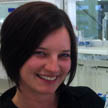I’m a Scientist is like school science lessons meet the X Factor! School students choose which scientist gets a prize of $1000 to communicate their work.
Scientists and students talk on this website. They both break down barriers, have fun and learn. But only the students get to vote.
This zone is the Organs Zone. It has scientists studying health and disease in various parts of our bodies. Who gets the prize? YOU decide!









Sunlight interacting with the Earth’s atmosphere makes the sky blue. In outer space the astronauts see blackness because outer space has no atmosphere.
Sunlight consists of light waves of varying wavelengths, each of which is seen as a different color. The minute particles of matter and molecules of air in the atmosphere intercept and scatter the white light of the sun. A larger portion of the blue color in white light is scattered, more so than any other color because the blue wavelengths are the shortest.
When the size of atmospheric particles are smaller than the wavelengths of the colors, selective scattering occurs-the particles only scatter one color and the atmosphere will appear to be that color. Blue wavelengths especially are affected, bouncing off the air particles to become visible.
This is why the sun looks yellow from Earth (yellow equals white minus blue). In space, the sun appears white because there is nothing in between to scatter its white light.
At sunset, the sky changes color because as the sun drops to the horizon, sunlight has more atmosphere to pass through and loses more of its blue wavelengths. The orange and red, having the longer wavelengths and making up more of sunlight at this distance, are most likely to be scattered by the air particles.
The scattering of visible light by atmospheric gases is most correctly called the Tyndall effect, but it is more commonly known to physicists as Rayleigh scattering after Lord Rayleigh, who studied it in more detail a few years later. Rayleigh Scattering is where red, orange, yellow, and green are passed through and blue, indigo, and violet are “scattered” out creating the color.
Whichever direction you look, some of this scattered blue light reaches you. Since you see the blue light from everywhere overhead, the sky looks blue!
0
The answer is a little more complicated than you may think. It may have a lot to do with rocks and ancient algae.
For the first two billion years of Earth’s history or so, the sky was probably orange. We’re not sure whether that’s really true — no one’s been able to hop in a time machine and go back and check — but based on what we know about the chemistry of that time period, there’s a good chance the atmosphere’s primary component was methane (CH4), which would’ve cast a strange pall over our young planet.
These days, the atmosphere is mostly nitrogen and oxygen. Sunlight is made up of all the colours of the rainbow (as well as many wavelengths we can’t see); as it jostles through air molecules, blue light is most efficiently reflected, so our eyes end up experiencing a beautiful azure shade.
How did it change from orange to blue? About 2.5 billion years ago, the newest fad in organisms was photosynthesis — the ability to to turn sunlight, carbon dioxide (CO2) and water into sugar. Ancient algae had it made — an everlasting food source and all the world’s oceans to expand into. Algae need more than sugar for a balanced diet; they need nutrients like phosphorous, too.
When enhanced tectonic activity and a change in climate eroded large amounts of phosphorous-rich rocks and washed it into the ocean the algae had plenty of phosphorous to munch. The algae went wild, churning out oxygen that flooded the atmosphere.
The algae changed the composition of the air and this in turn affected how light bounced off the air molecules.
1
Yep. The ladies have this covered!
Simply put: Think of it as white light from the sun goes through certain things in the atmosphere that in turn “filter” and change the colour to what we see.
0